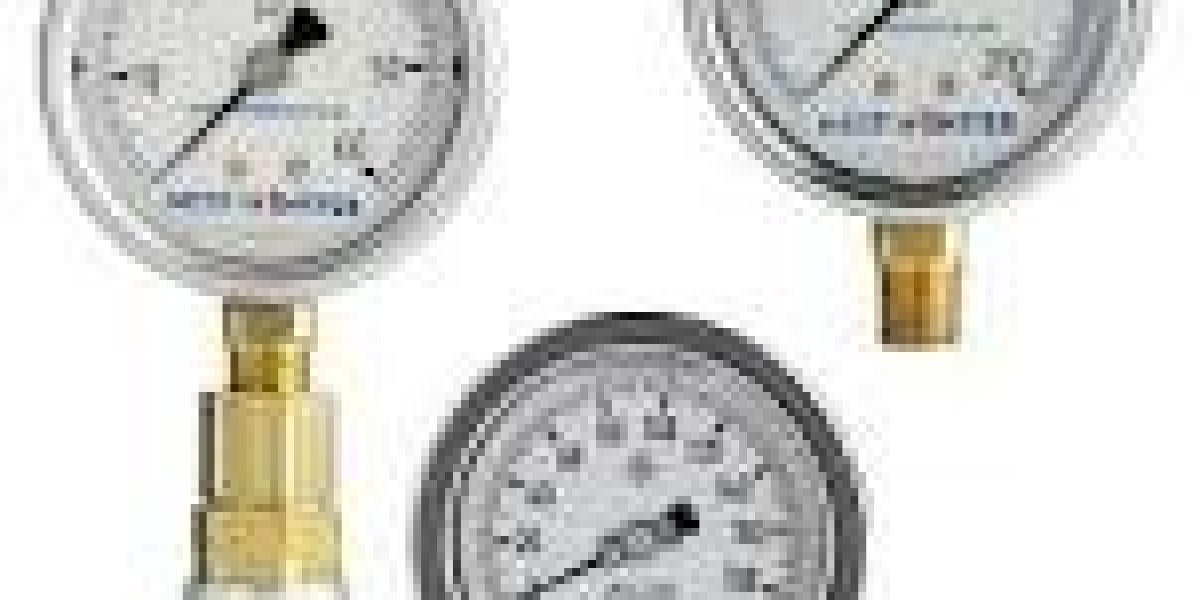Precision is not just a benchmark in today’s industrial landscape—it’s a necessity. Whether you're running a factory floor, managing a remote construction team, or handling logistics, having calibrated gauges in your toolbox can mean the difference between seamless operation and costly downtime.
Calibrated gauges—tools used to measure pressure, temperature, flow, and other variables—are the unsung heroes behind many safe, efficient, and compliant processes. Let’s explore why these tools are so critical, how they work, and how they can protect your people, your operations, and your bottom line.
What Are Calibrated Gauges?
A calibrated gauge is simply a measuring instrument that has been tested against a known standard to ensure accuracy. Calibration involves adjusting the device until its readings match those of a trusted reference within a specified tolerance.
Think of it like setting a watch: you wouldn't trust it to be on time if it’s never compared to a clock you know is accurate. Gauges that aren't calibrated can drift over time, giving inaccurate readings that can lead to poor decisions or unsafe conditions.
Why Accuracy Matters in Industry
In the real world, a slight misreading on a gauge can cause major consequences. Imagine an overpressurized steam system where the gauge reads low because it's out of calibration. The team sees no danger—but the risk of explosion is real.
Here’s what calibrated gauges help ensure:
Product Quality: In manufacturing, even small deviations can lead to defects. Precision tools mean consistent output.
Employee Safety: Properly calibrated pressure gauges, for example, can prevent equipment from operating outside safe limits.
Compliance: Many industries are bound by regulations that require routine calibration of measuring devices.
Cost Control: Mistakes caused by faulty readings can result in waste, downtime, or worse—liability claims.
Industries That Rely on Calibrated Gauges
While just about every sector uses measuring tools, some depend heavily on calibration to operate safely and effectively:
| Industry | Common Use of Gauges | Why Calibration is Critical |
|---|---|---|
| Oil and Gas | Pressure and temperature monitoring | Avoids blowouts and ensures environmental compliance |
| Food and Beverage | Temperature and flow rate control | Maintains product quality and meets health standards |
| Pharmaceuticals | Clean room monitoring, pressure | Ensures exact formulations and meets FDA regulations |
| Fire Protection | Pressure gauges on hydrants and pipes | Prevents equipment failure in emergency situations |
| Manufacturing | Dimensional and pressure gauges | Keeps machinery within safe, effective operating ranges |
Real-World Example: Fire Safety Systems
Take fire hydrants, for instance. If the pressure gauge on a hydrant is inaccurate, the response during an emergency could be ineffective. That’s where NFPA hydrant color code standards come into play.
NFPA hydrant color code refers to the system defined by the National Fire Protection Association to classify hydrants based on their available flow rate. The color coding helps emergency personnel quickly assess how much water is available at a given hydrant:
| Hydrant Color | Flow Rate (GPM) | Description |
|---|---|---|
| Light Blue | 1500+ | Excellent flow |
| Green | 1000–1499 | Good for residential areas |
| Orange | 500–999 | Marginal for fire-fighting |
| Red | Below 500 | Not adequate for firefighting |
These colors are only meaningful if the pressure gauges used to assess the flow are properly calibrated. Inaccurate readings can lead to mislabeling, which in turn affects emergency response strategies.
More on NFPA hydrant color code standards: NFPA official resource
Best Practices for Gauge Calibration
Maintaining gauge accuracy isn’t complex, but it does require consistency. Here are a few practical tips:
Schedule Regular Calibrations: Monthly, quarterly, or annually—depending on how critical the gauge is and how often it’s used.
Keep Records: Log each calibration, including who did it, when, and what adjustments were made.
Use Certified Labs: When outsourcing calibration, make sure the lab follows ISO/IEC 17025 standards.
Don’t Ignore Drift: If readings seem off or inconsistent, it’s time for a check—even if the next scheduled calibration is weeks away.
Train Your Team: Especially in remote teams, everyone should understand how to identify when a gauge might be misreading.
How Calibrated Gauges Support Remote Teams
For remote team leaders and project managers, especially those overseeing multiple job sites or distributed equipment, calibrated gauges offer a layer of reliability that’s hard to match.
Without regular onsite oversight, you need to trust that your tools are giving accurate data. Whether it's a pressure gauge on a water supply system or a flow gauge in a distillery, remote decisions rely on remote accuracy.
A few ways to stay ahead:
Use IoT-connected gauges that report readings and calibration status remotely.
Partner with local services near remote job sites for periodic physical inspections.
Implement a shared dashboard that shows calibration schedules and reports.
Conclusion: Precision Is a Culture
Investing in calibrated gauges isn’t just about the tools—it’s about promoting a culture of precision, safety, and accountability. Whether you're part of a startup, managing a decentralized team, or ensuring compliance in a highly regulated industry, these small devices carry big weight.
And when you're dealing with something like the NFPA hydrant color code, it’s clear that reliable gauge readings can be a matter of life and death.
For more on how our team at NFPA Hydrant Color Code supports industrial safety through accurate tools and standards, explore our resources and guides.






